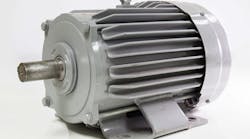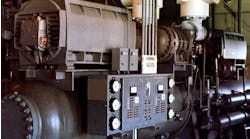Motor Nameplate Current vs. NEC Full Load Current Values
When sizing circuit breakers, fuses, and conductors for a general AC motor branch circuit, National Electrical Code (NEC) Sec. 430.6(A)(1) stipulates that the currents indicated in the current tables at the end of Art. 430 must be used to determine the ratings instead of the actual nameplate current rating. Do you know why we can’t use the nameplate rating of motors when making these calculations? If we did, it would typically result in smaller branch-circuit, short-circuit, and ground-fault protective devices and conductors.
The full-load current values for NEMA motor horsepower ratings found in Tables 430.248, 430.249, and 430.250 are typically higher than the nameplate value found on the actual motor. The table value ensures that no matter what motor is installed, the conductor and branch-circuit, short-circuit, and ground-fault protective devices are sized to safely operate the motor.
For example, the nameplate rating of a 480V, 3-phase, 50-hp motor may only be 60A, taking into account the lowest running power factor and efficiency level. However, the NEC table value is 65A. The table values account for a power factor (PF) and efficiency level somewhere less than 100% (among other characteristics) between different motors. Remember, a motor’s PF and efficiency will vary with the mechanical load applied. An under-loaded squirrel cage motor has a lower PF; whereas, a highly loaded motor has a higher PF.
To illustrate this concept, let’s take a 50-hp motor at 100% PF and 100% efficiency and solve for current.
A quick check of the NEC table, however, indicates that we should be using a value of 65A.
Why is the NEC value nearly 20A more than our calculated value? Let’s run through the calculation again using a 0.85 PF and a 0.85 efficiency.
As you can see, this result is much closer to the NEC table value. Do you know why? This tells us that the current values shown in the NEC tables already factor in some level of PF and efficiency.
While branch-circuit, short-circuit, and ground-fault protective devices and conductors must use the NEC table current values, thermal overloads should be calculated using actual nameplate data.
© 2017 Fluor Corporation. All Rights Reserved.





